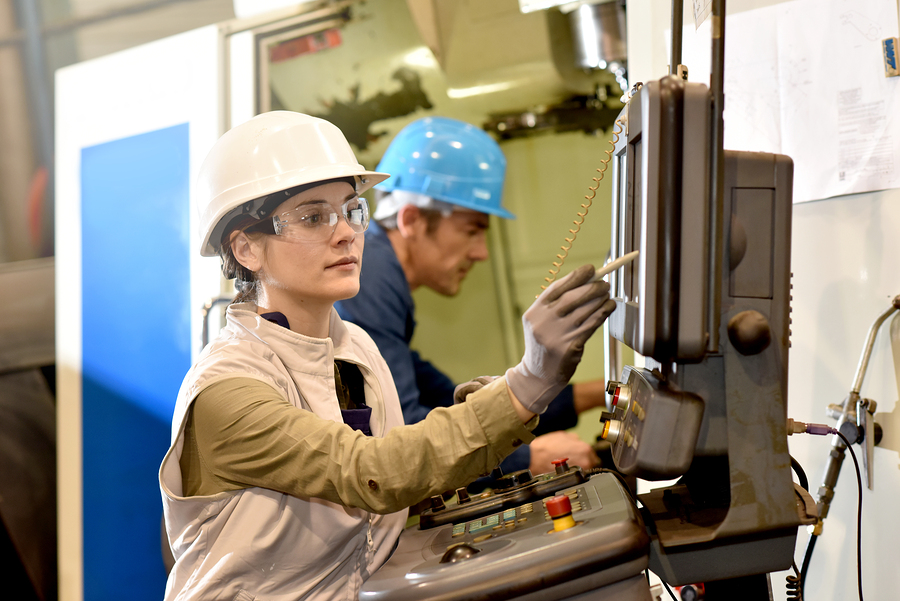Over the next decade, experts estimate that we will need to fill 3.5 million manufacturing positions. But when it comes to meeting this massive need, one key demographic of workers remains untapped: women.
Despite making up half the world’s population, women represent only 27% of manufacturing professionals. It’s high time that number goes up.
Women in Manufacturing History

When you think of female manufacturing professionals in history, it’s hard not to picture Rosie the Riveter, with her flexed bicep and confident catchphrase. Rosie is an icon of a transformative period in American manufacturing history, when so many men were off fighting in World War II that factories had to attract women to keep their factories full.
But while Rosie may have been something of a pioneer in manufacturing, she was far from the first woman to work a factory job. During the industrial revolution, it was common for women, particularly immigrants, to work in factories producing textiles.
These days, manufacturing is heavily computerized — a far cry from the dirty, dangerous work of the 1900s. In today’s manufacturing world, more people are capable of learning the necessary skills.
Welcoming Women to Manufacturing
Not only does manufacturing offer women an array of challenging, rewarding, and high-paying careers, women have unique assets to offer the manufacturing industry, too. In fact, women earn more than half of the associate’s, bachelor’s, and master’s degrees in the United States. Businesses with more female executives have even been found to have a 34% higher total return than those with more male-dominated leadership.
So how can manufacturing plants attract women? This is the question many manufacturing plants find themselves asking as the manufacturing skills gap continues to grow.
In an unfortunate self-fulfilling prophecy, many women are reluctant to pursue manufacturing simply because they don’t want to be a minority in a male-dominated workforce. Taking a strong, vocal stance against gender discrimination, setting and publicizing diversity goals, and ensuring that you have women in leadership positions are all great ways to signal to potential female employees that your business is dedicated to creating a work environment that benefits everyone.

Of course, saying that your workplace will welcome women isn’t the same thing as doing it. It’s imperative that businesses follow through on their promises and enforce organizational accountability to promote personal development and maximize all employees’ potential.
Even though America’s current manufacturing workforce is mostly men, the future of manufacturing will likely entail a significant increase of women. Why should the manufacturing industry handicap itself by trying to fill the millions of upcoming manufacturing positions from only 50% of the population? Instead, manufacturing businesses would do well to embrace what women can bring to their plants.
